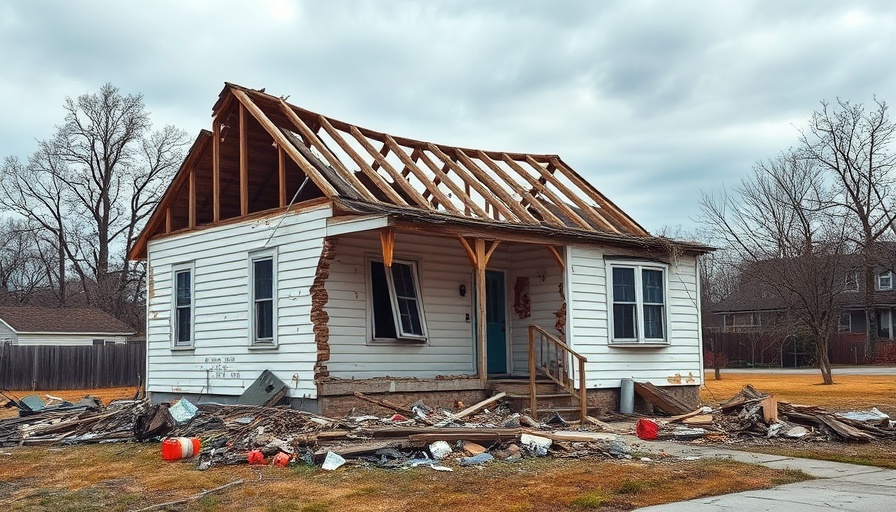
A Community Torn Apart by a Tornado
On May 16, a devastating tornado tore through St. Louis, Missouri, leaving a trail of destruction in its wake. Residents like Kevin Hines are grappling with the immense challenges following the catastrophe. Hines, whose home now sports a blue tarp instead of a roof, faces an uncertain future as he tries to navigate his life without basic necessities. His challenges reflect the hardship faced by thousands in the region.
The Tornado's Impact in Numbers
The tornado cut through a 23-mile-long path, affecting not just the immediate area but also communities across the Mississippi River in Illinois. According to estimates, around 5,000 structures were damaged, resulting in property damage worth approximately $1.6 billion. The tragic toll also included the loss of five lives and injuries to 38 others. The scale of destruction prompts us to consider the immediate and long-term implications for those impacted.
Community Resilience and Volunteer Action
In the face of such overwhelming loss, the response from local volunteers has been significant. Organizations like Action St. Louis, led by activists like Kayla Reed, are mobilizing resources to provide critical relief in the form of food and water. Yet, Reed emphasizes that while these efforts are vital, they are merely a starting point for recovery. The community will require sustained support and a long-term recovery strategy to return to normal.
Systemic Issues Amplifying the Crisis
As local activists point out, the tornado's aftermath serves as a stark reminder of existing systemic inequalities that plague residents of North St. Louis. This predominantly Black community has dealt with entrenched issues like high infant mortality rates, poverty, and incarceration, which compound the disaster’s impact. Kayla Reed poignantly mentions, "A natural disaster met a created one and a systemic one." This intersection of ongoing struggles with the sudden devastation of a tornado lays bare the complexity of recovery efforts.
The Waiting Game for Federal Aid
As the community rallies for recovery, questions linger around the federal assistance response. Governor Mike Kehoe has requested an emergency declaration from President Trump, seeking around $5 million for cleanup efforts. However, hesitancy surrounding aid allocation, especially towards Black communities, adds a layer of uncertainty. Previous instances where federal aid requests from specific states were denied raise concerns about equity in disaster response.
Implications for Businesses and Communities
The fallout from such disasters can extend beyond immediate community suffering, affecting economic stability. As businesses in the region grapple with damage and operational delays, the tornado highlights the vulnerability of tech-driven industries to natural disasters. Community recovery impacts employee morale, workforce availability, and a business’s capacity to rebound in the aftermath of such tragedies. This reality necessitates that business leaders consider robust disaster recovery plans as part of their operational strategies.
Moving Forward: Actionable Insights and Support Strategies
As we look ahead, both individuals and organizations can take actionable steps to assist communities in recovery. Businesses can engage in corporate social responsibility initiatives that support local rebuilding efforts. Additionally, forming partnerships with nonprofits can ensure that resources go where they are most needed.
For individuals looking to contribute, volunteering time, donating funds, or advocating for increased federal support are effective ways to make a direct impact.
Conclusion: The Need for Continued Community Support
The devastation wrought by the tornado in St. Louis serves as a wake-up call not just for those directly affected but for communities across the nation. The recovery will require a layered approach that acknowledges systemic inequalities while mobilizing resources and volunteers effectively. Business leaders and professionals in the region have a unique opportunity to lead by example, demonstrating solidarity with those in need and promoting long-term recovery strategies.
By supporting local initiatives and ensuring that relief extends to the most vulnerable in our communities, we embody the resilience needed to withstand and recover from such calamities. The journey may be long, but with collective effort, recovery is possible.
 Add Row
Add Row  Add
Add 




 Add Row
Add Row  Add
Add 

Write A Comment